Integrate the existing library system to improve the utilization rate of existing resources

Timeline
Sep-Dec 2023
(15 weeks)
Role
Researcher
Service Designer
Team
Qingqing Zhou(myself)
Leticia Li
Youer Zhou
Minji Yoouk
Client
SVA Library
Advisors
Marshall Sitten
MY ROLE
Conducted research, physical visiting test
Prepare & Conduct Interviews
Turn the insight from research into viable design systemCreated multiple design improvements that can be put to use right away
HIGHLIGHT
The SVA Library asked us to improve tutorial class. We aim to make use of the existing resources to comprehensively improve the existing system, so as to provide students with a better experience without adding extra burden to the librarians.
01
Update request form
Help librarians quickly understand tutorial class requirements.
02
The tutorial class package
Designed based on the library's existing material formats, contains materials students can use daily.
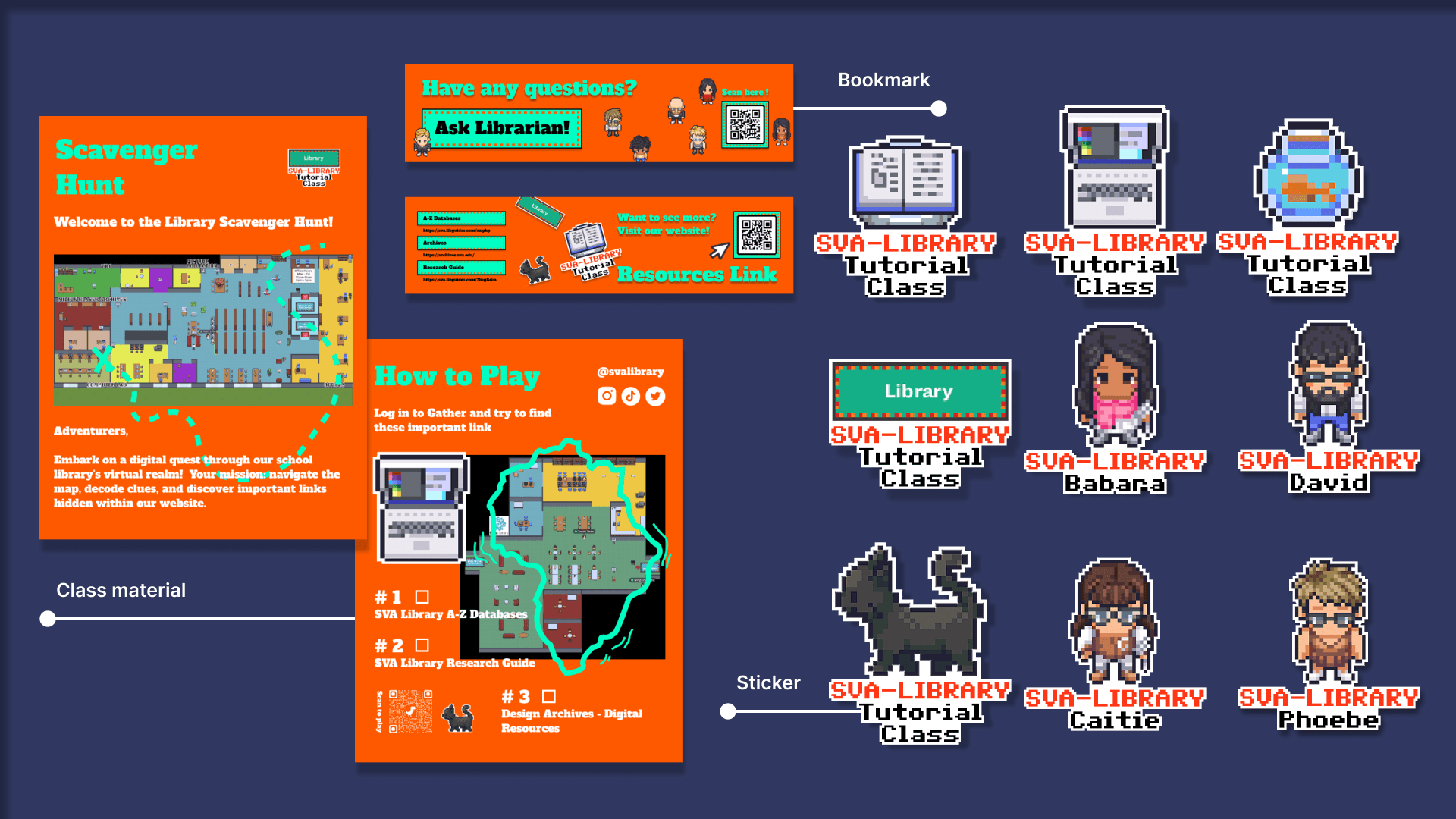
03
Gather tutorial class
Revised version of the course will utilize the Gather platform for an engaging and varied teaching approach.

04
After Class Debrief
Service for librarians to note information after each class.
ABOUT SERVICE
The SVA Library offers tutorial class for having a better understanding about how to make use of library sources.
Tutorial class is currently the library's main contact point with students.

PROBLEM
How might we using tutorial class
as a bridge to create more lasting connections
between library and students?
RESEARCH
My team and I interviewed 5 students experienced tutorial class to understand their needs. We also participated in 1 tutorial class and spoke with students in the class, to gain insights into the context.

KEY FINDINGS
My team and I interviewed 5 students experienced tutorial class and 3 librarians to understand their needs. We also participated in 1 tutorial class and spoke with students and in the class, to gain insights into the context.
Findings from the student side:
“The tutorial class contains so much information in 45 minutes that it's easy to lose focus.”
“Through tutorial class, I have a better understanding of the library resources, but it would be nice to have a place to summarize all the relevant information.”
“We have to use resources to complete class assignments, it’s an essays for humanity class. But to be honest, I forgot to record the information related to the homework.”
Findings from the librarian side.
“Each professor teaches different content in tutorial class. Some professors do not provide course-related content, which makes our courses less targeted.”
“Every librarian has a different teaching style, and I hope to learn what other librarians find useful and effective.”
“I also think that the 45-minute class contains too much content, which will easily make students lose their attention. If there is any way to make students more involved, it will be so great.”
USER JOURNEY MAP
Based on the user journey map, we identified three key stages to address pain points for students and librarians.

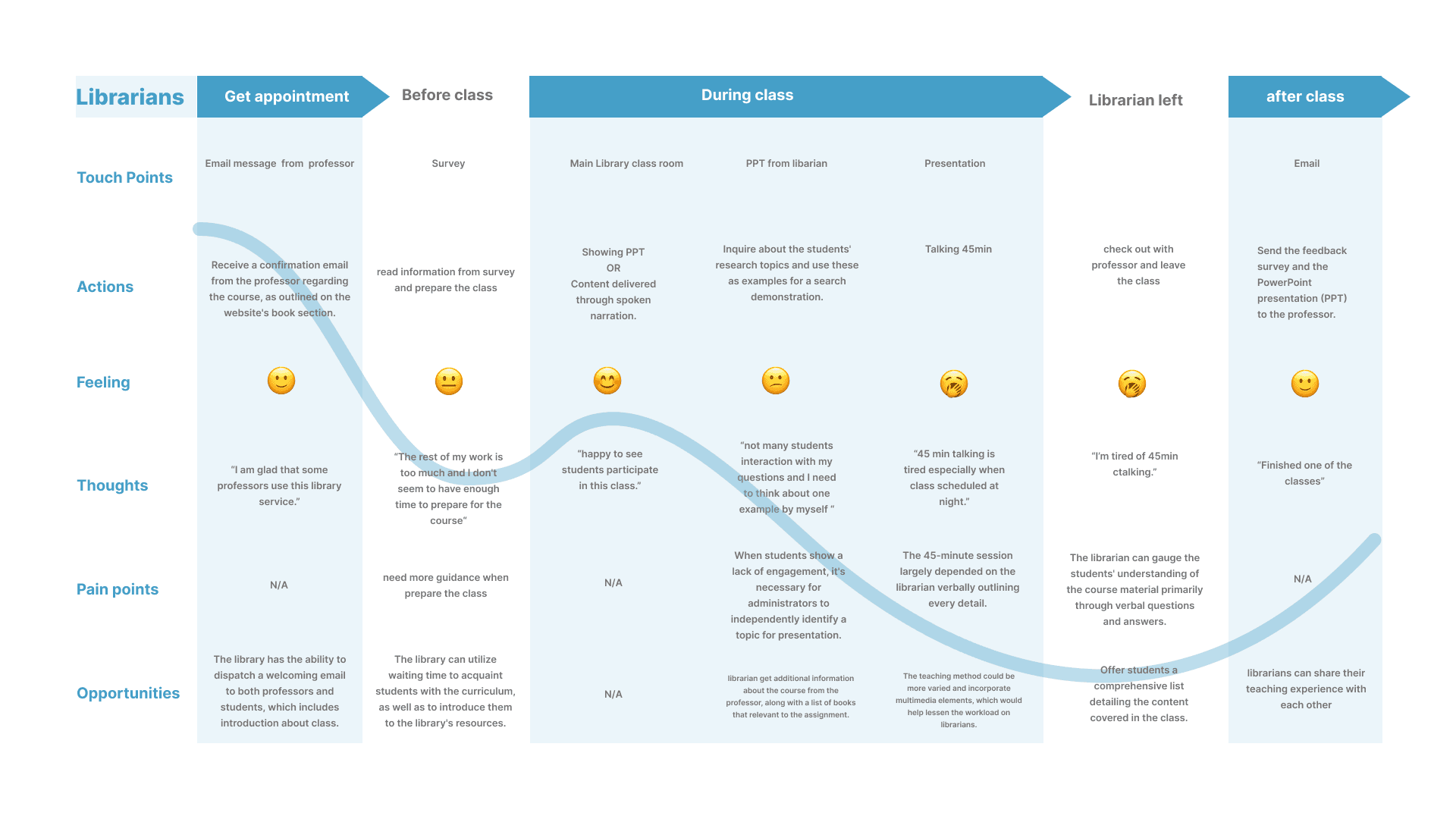
Summary of Opportunity Areas
Before Class
The library can send a welcome email to professors and students, introducing the class.
The library can use waiting time to familiarize students with the curriculum and introduce them to its resources.
During Class
The librarian receives course details and a relevant book list from the professor.
Diversify teaching methods with multimedia to reduce librarian workload.
After Class
Librarians can share their teaching experience with each other.
Offer students a comprehensive list detailing the content covered in the class.
Co-Design
Based on our summary of opportunity areas. We held a co-design workshop with 2 librarians, to sxplore solutions.

TakeAWAYS
Systematize the class
Inconsistency of the class’s service structure
Ignore and waste some useful resources
Easy & Valuable & Fun
Librarian: loose burden for preparation and teaching
Professor: toggled the class more tightly
Student: more attractive and interactive
Multi media
Back and force of the presentation and website
Hard to follow
Loose attention
Limitation of design
Lack of budget
No extra work
The design must fit within the school's system
SOLUTIONS
We improve the tutorial class system from four aspects.

Update Request Form
Turotial class package

Brand New Tutorial Class

After Class Debrief
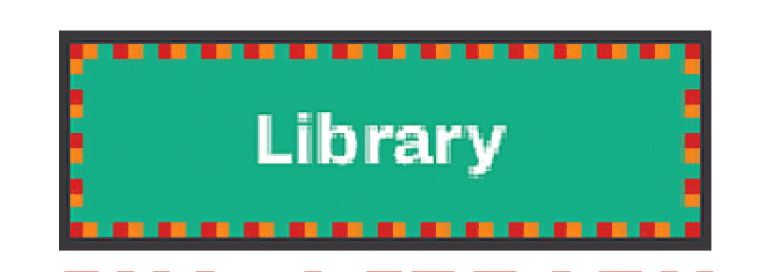







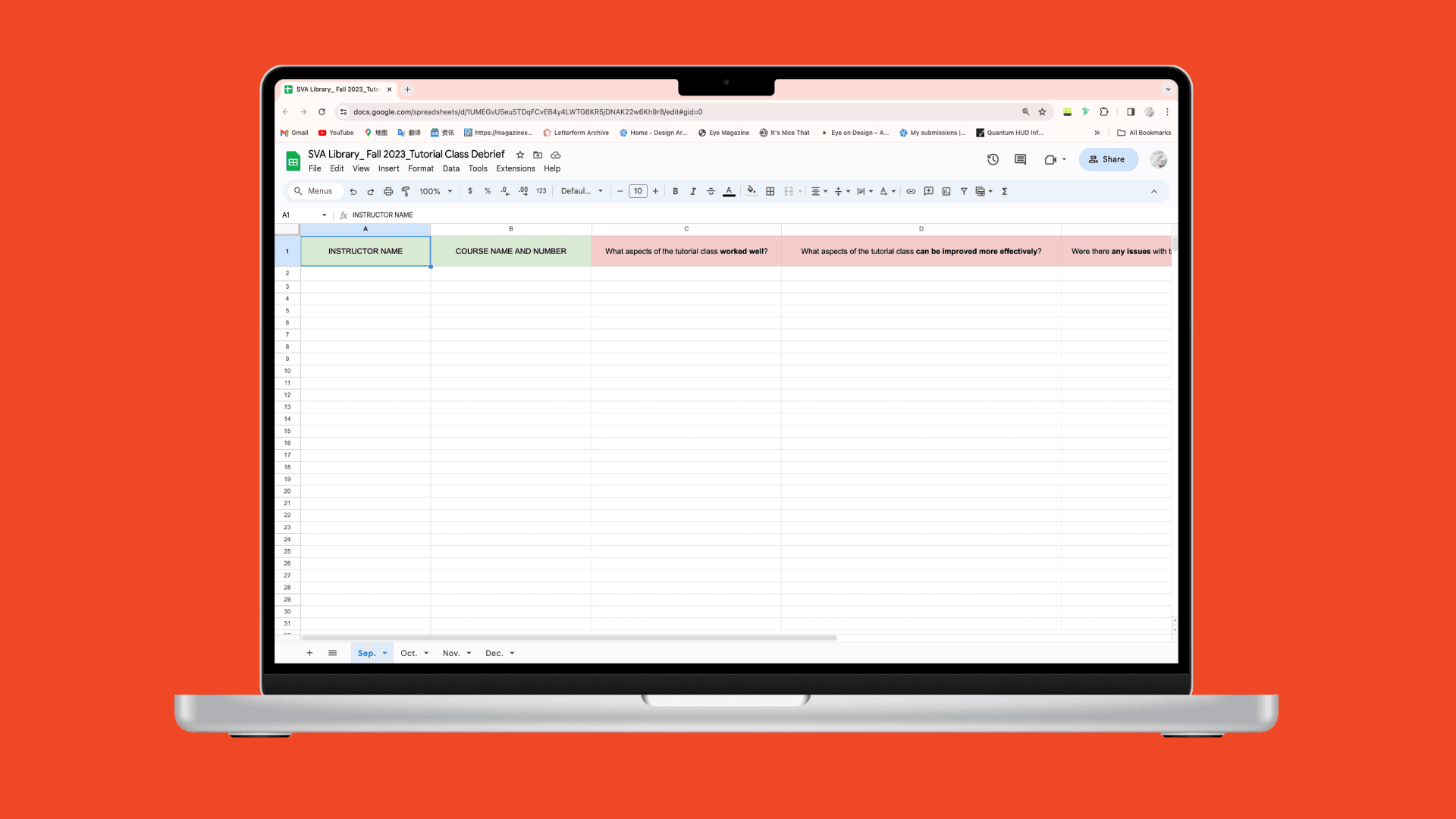
User Testing
To learn user’s thoughts for idea. We use high-fi prototype and test the ideas with our users. Their valuable feedback was incorporated into our design iterations, driving improvement in the next iteration.
Findings from the librarian side.

Findings from the student side.
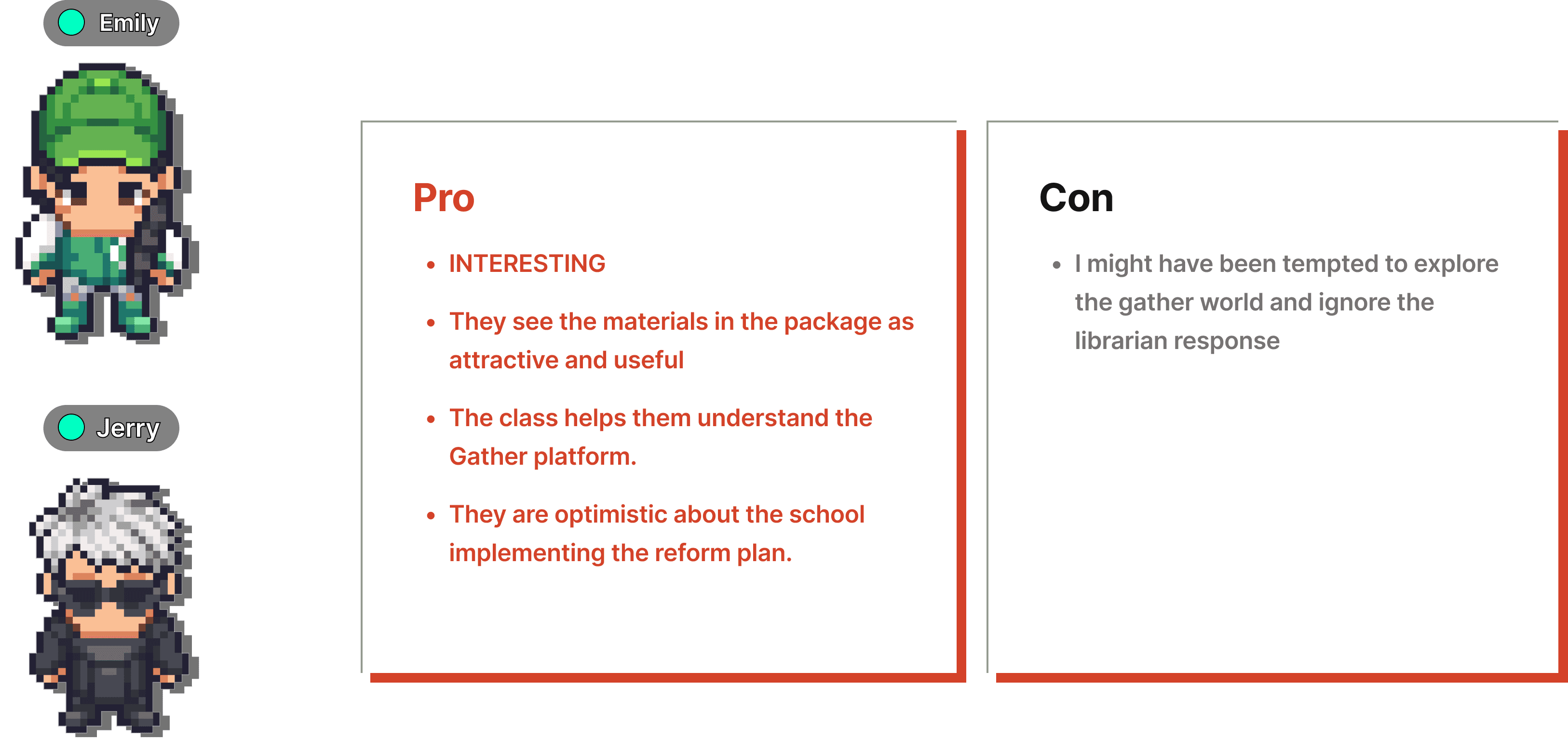
NEXT STEPS
Co-work and Co-design with OTL and Library
Making sure the adjustments parts and details
Planned the time to do the upgrading of virtual library
Testing
Prepared the new tutorial class
Gradually upgrade the tutorial class to the next level
Promotion
Ads, posters, emails, or more are welcome
RESULTS & FEEDBACK
Positive feedback from both students and library end!
4 out of 4 Students think our solutions will make the class more easy to focus.
2 out of 4 our solutions was put into use immediately. And the library want to build long-term cooperation.
REFLECTION
It was a great experience working with the SVA Library. It has widened my perspective in designing service and whole system. I also learned several new aspects:
Approaching design with a broader system mindset
We have done research on the whole system and analyzed which aspects of the whole system can be improved. I learned to design a broader approach and to understand how it could be scalable for growth in the near future.
Consider needs for different stakeholders
When we redesigned the system, we realized that librarians work very hard, and we realized that our design was not just for students. We also had to consider the impact of changing the system on other stakeholders.
